
Contact

Home
Hoaxes & Pranks: Monster Hunters
SHARK V. SAWFISH
The Argus (Melbourne, Vic.)
Date: October 4, 1924
Page Number: 9
Mr. F. A. Mitchell-Hedges, explorer and big game hunter, gives a fascinating account of an expedition to the Pacific "In Search of Sea Monsters," in the "Wide World" magazine. Here is his description of a battle between a shark and a huge sawfish. "Whilst at anchor one day, when I was about to lower my lines, I happened to look ahead, where my attention was attracted by the dorsal fin of what I judged to be a 15ft. shark moving slowly through the water. Almost at the same time a huge black shape rose to the surface. Neither creature appeared to take the slightest notice of the other, the shark continuing on its way, the black shape lying almost motionless. As it swam past, however, at a distance of about 20 yards, the shark suddenly shot in at right angles towards the great sawfish—for such it was—and before it could make a movement tore a huge chunk out of its side. Thereupon the attacker turned to escape—but too late! The terrible weapon of the wounded leviathan flashed around, and from where we were we could distinctly hear the thud as it struck the shark, almost severing it in two. Again the blow was repeated, the second being even more violent than the first. The shark must have been killed instantaneously.
F. A. Mitchell-Hedges part 5



The Wide World Magazine was a British monthly illustrated publication which ran from April 1898 to December 1965.
It described itself as "an illustrated magazine of true narrative" and each month purported to feature "true-life" adventure and travel stories gathered from around the world. Its motto was "Truth is stranger than fiction".

The Brisbane Courier (Qld.)
Date: January 1, 1925
Page Number: 10
MR. F. A. MITCHELL-HEDGES is one of the most noted of modern explorers, having become especially noted for his investigations in the Central American Republics, and he is a great believer in the business possibilities of those regions. He holds the view that their hundreds of thousands of square miles of territory are probably the richest agricultural land in the world, and not long sine he wrote in an English journal suggesting the possibilities of a business exploration of Latin America. Mr. Mitchell-Hedges should certainly know what he is talking about, for he has spent a large portion of his life in exploratory work in the countries of which he thinks so highly. He penetrated an unknown portion of the hinterland of Panama, and discovered a new race of people, and he has presented large collections of hitherto totally unrecorded specimens to the British Museum and the museums of Oxford and Cambridge. He holds, also, numerous world's records for the capture of giant fish, and his discoveries have added largely to the data of ichthyological science. Mr. Mitchell-Hedges was born in 1882, and was educated at University College, London. He is a Fellow of numerous learned societies.

The Legend of F. A. Mitchell-Hedges
This article shows the mythos of Mitchell-Hedges in full flight: modern explorer, business
promoter, discoverer, philanthropist, big game hunter, world record holder, scientist, and learned fellow.
Myths may arise as
either truthful depictions or overelaborated accounts of historical events, as allegory for or personification of natural phenomena,
or as an explanation of ritual. They are transmitted to convey religious or idealized experience, to establish behavioral models,
and to teach. In casual use, [Myth refers to] a popular misconception or imaginary entity [so] the original unambiguous term "mythos"
may be a better word to distinguish the positive definition from the negative.
Like mythos, legends are stories that are
traditionally considered true, but are set in a more recent time, when the world was much as it is today.
A story may be considered
true (and therefore a mythos) in one society, but considered fictional (and therefore a folktale) in another society.
.

LOST CITY
EXPEDITION TO CENTRAL AMERICA
ADVENTURES IN THE JUNGLE
Northern Star (Lismore, NSW)
Date: February 25, 1925
Page Number: 6
Below is a description by Mr. F. A. Mitchell-Hedges, the explorer, of his journey to British Honduras.
Mr. Mitchell-Hedges, with Dr. Thomas Gann, the authority on the Maya civilisation, and Lady Brown, wife of Sir Richmond Brown, hope to penetrate the interior of British Honduras to investigate further the unknown and deadly region in central America where in the spring of 1923 they discovered the ruins of the lost city of Lubaantun, the seat of the Maya people.
Without mishap we arrived in Jamaica, the beautiful Blue Mountains, with the little town of Kingston lying at the foot, appearing like pantomime scenery. We had a great welcome, but were only one day in port, and then left for Puerto Cortes, in the turbulent Republic of Honduras. We stayed only a few hours and then left for Puerto Barrios, in the Republic of Guatemala.
From Puerto Barrios a railway line runs into the interior to , the capital of the country. There are, of course, no roads here. We were compelled to remain for four days, so chose an afternoon to wander up the railway track, closed in by the solid wall of jungle which comes down on either side to the edge of the line.
We had not gone more than a mile before we encountered a boa constrictor, eleven to twelve feet long, stretched basking in the blazing sun between the metals. It was the last thing in the world we were expecting, and we had nearly stepped on it before its loud hiss made us jump back with more haste than dignity. It appeared quite unconcerned.
We had gone very little farther when we came across a giant beetle, five inches in length, which I have preserved and shall ultimately bring back to England. After having trekked about four miles, wet through with perspiration (the temperature was more than ninety in the shade), we sat down to rest before returning.
Suddenly Lady Brown touched me softly on the arm. I turned round and, squatting, looking at us seemingly in amazement, was a large white-faced monkey. Its inspection finished, it screwed up its face in a horrible grimace and, stalked, cat-like, back into the jungle.
When we left Puerto Barrios, after three hours' steaming, our boat entered a maze of little coral-sand, islands of great beauty, all completely covered with graceful coconut palms, and set in a sea of sapphire blue.
In the early morning light, the following day we found he had dropped anchor a mile and a half off shore from Belize. (Steamships cannot approach nearer than this, the water being too shallow.) Our voyage was ended. We had arrived at our destination.
It will take us some time to get in our stores and complete the arrangements for departure on our deepsea research work, and the excavations at the great Maya city we discovered, now known as Labaantun.
What we shall unearth is on the knees of the gods. From the articles which may be brought to light from the burial chambers of the kings, priests, and nobles, the scientific world will determine the age and mystery which surrounds this buried city.
Possibly the solution to the riddle of a great civilisation lies buried in the stupendous pyramidal structures of Lubaantun, the whole covered by dense jungle for certainly over 2000 years.
We feel we are standing on the threshold of the Great Unknown.



Lubaantun is a pre-Columbian ruined city of the Maya civilization in southern Belize, Central America.
The city dates from the Maya Classic era, flourishing from the AD 730s to the 890s, and seems to have been completely abandoned soon after.
At the start of the 20th century inhabitants of various Kekchi and Mopan Maya villages in the area mentioned the large ruins to inhabitants of Punta Gorda. Dr. Thomas Gann came to investigate the site in 1903, and published two reports about the ruins in 1905.
The next expedition was led by R. E. Merwin of Harvard University's Peabody Museum in 1915 who cleared the site of vegetation, made a more detailed map, took measurements and photographs, and made minor excavations. Of note Merwin discovered one of the site's three courts for playing the Mesoamerican ballgame, which had stone markers with hieroglyphic texts and depictions of the ballgame.
In 1924 Gann revisited the ruins, and then led adventurer F.A. Mitchell-Hedges to the site. In his typically sensationalistic fashion, Mitchell-Hedges published an article in the Illustrated London News claiming to have "discovered" the site. Gann made a new map of the site. The following year Mitchell-Hedges returned to Lubaantun as a reporter for the Illustrated London News, accompanied by his companion Lady Richmond Brown.

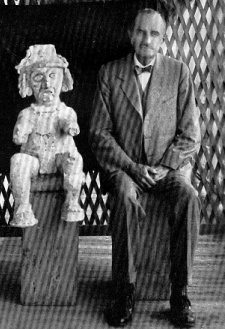

c 1920s
Thomas William Francis Gann (13 May 1867 – 24 February 1938) was a medical doctor by profession, but is best remembered for his work as an amateur archaeologist exploring ruins of the Maya civilization.
‘Destructive, … notorious, … telling tall tales’ – Gann in Retrospect
It is clear from these histories that Gann, when working in the 1920s and 1930s, and in the absence of other serious local interest until quite later on, was very much out of step with contemporary archaeological field methods and ethics. Thus one can conceivably write of ‘two’ Ganns: one reporting his discoveries in learned journals to reasonable contemporary standards (1890s–1910s) and the other (1920s–1930s) giving in to a ‘predilection for telling tall tales’


A THRILLING ENCOUNTER.
ATTACKED BY GIANT RAY.
Western Mail (Perth, WA)
Date: May 7, 1925
Page Number: 21

We started the engine of the Cara (our yacht) and ran nine miles up the reef, close to North-East Cay (writes Mr. F. A. Mitchell-Hedges in the London "Daily Mail"). I have as a pilot a Cayman of the name of Levi. His knowledge of the reefs and fish is uncanny, and quite instinctive. Only a man born and bred here in the great lonely spaces can feel his way through the coral fangs and hidden rocks, literally scenting the home of the ray. We of the great cities have lost, largely, these senses that are developed to their full in Nature's children.
We dropped anchor, and taking a 20- foot pole with a barbed harpoon fixed to the end, which in turn is attached to a hundred yards of strong hemp line, and armed with my rifle firing the special bullets for this work, we left in our little dinghy. We both realised fully the danger of our quest. The ray is a repulsive, reptilian-looking creature, with white underside and slatey-grey back, and a long, whiplike tail in which is situated an ivory dagger—in an adult fish fully a foot in length. This is serrated down both edges like fish-hook barbs, and when it strikes its victim can only be removed by the fish giving a tremendous wrench. In this weapon lurks a terrible death. There are glands that contain deadly poison which flows into the punctured hole. Three to six minutes is the limit of life for anyone who is unfortunate enough to be struck by this dreadful creature.
We had spotted our first fish. Creeping up cautiously to within a yard or two, Levi raised the harpoon. lt flashed downwards, while I clutched the attached line, and prepared for the rush which would inevitably follow. In a swirling vortex of water and a cloud of sand flung upwards, with one wild dash the creature rushed madly ahead. The line tore through my hands—the flesh could not stand the burn as it hissed through my palms. I held it tightly down over the side of the boat close to the bow.
The friction cut into the wood; but by now our little light boat had gathered momentum and was being pulled rapidly along by the fish.
Now Levi took a hand, and we both hung on. Suddenly the wild rush ceased. We hauled in, yard by yard, until we were almost on top of it, when the fish turned and shot off at right-angles, nearly capsizing us. But the brute's strength was spent. Slowly we brought it up.
It was quite still when, almost on the surface its flukes began to thrash the water madly. The tail whipped round over the boat.
"Hold with all your strength. Levi, for a second!" I released the line and grasped my rifle. The head appeared once more above the surface. There was a tremendous burst of water which sent waves into the boat. Then the rifle barked. Only one shot with the bullets I am using was necessary, and the fish lay inert and motionless. We successfully beached it and cut the harpoon clear.
A few minutes' rest, and we were off on the hunt again.
Another black patch appeared, appar- ently larger than the others. It was quite motionless. Again Levi struck
with the harpoon while I grasped the line. The fish rushed no more than 20 yards, then turned and made straight for the boat. Into the air it shot, fully 15ft., its white belly gleaming above us. We were in awful danger. No longer were we the attackers, but were being deliberately attacked by this great fish.
Its tail swished round, missed, and with a crash, its body struck the water within two feet of the boat. Again it dashed off, once more to turn and charge, this time missing us by a bare margin of inches. It again struck the water, sending a wave on board that half sank us.
We were powerless to avert what looked like certain disaster, for the ray shot beneath the surface away from us—then stopped. We knew what was coming. Another mad rush towards us, then again into the air it was propelled, carried onwards by the momentum it had gained. I had grabbed my rifle mechanically.
"Shoot-shoot!" gasped Levi. I fired. More by luck than judgment the bullet crashed through the creature in mid-air. It fell in a burst of blood and foam, while we sat there, grey and shaken, as we realised our escape from death had been miraculous.
I have caught a pood many of these fish, but it is the first time I have ever experienced one attacking in this fashion. It weighed 360lb.
Symptoms:
•Airways and lungs
-Breathing difficulty
•Heart and blood
-Irregular heartbeat
-Low blood pressure
•Nervous system
-Fainting
-Generalized cramps
-Headache
-Paralysis
-Weakness
•Skin
-Bleeding
-Pain and swelling of lymph nodes near the area of the sting
-Severe pain at site of sting
-Sweating
-Swelling
•Stomach and intestines
-Diarrhea
-Nausea
-Vomiting
Home Treatment:
Wash the area with salt water. Remove any foreign material at the wound site. Contact an emergency room. Soak the wound in the hottest water the patient can tolerate for 30 - 90 minutes, if instructed to do so.
Expectations (prognosis):
Recovery usually takes about 24 - 48 hours. Death has occurred when the patient's chest or abdomen was punctured.

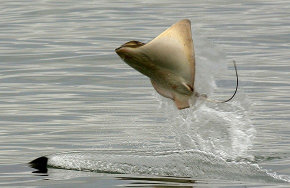
A JOURNEY TO THE JUNGLE.
EXPLORER'S THRILLING EXPERIENCES.
The Register (Adelaide, SA)
Date: July 6, 1925
Page Number: 7

Mr. F. A. Mitchell-Hedges, the explorer, describes in The London Daily Mail his journey towards the lost City of Lubaantun, the seat of the Maya people in Central America, where he arrived recently. Mr. Mitchell-Hedges writes that he find the ruins stupendous and exceeding all his expectations. He will further investigate the ruins of the city, which he and his companions discovered last year.
Our preparations for the journey to Lubaantun completed, two dugouts were loaded, with three Indians in each; our yacht; the Cara, took them in tow, and we left Punta Gorda for the Rio Grande—five miles by sea.
We safely crossed the mudbar and entered the deep stream flowing through miles of mangrove swamp.
A Miserable Night.
A few hours' run and the Cara was compelled to stop. We transferred the towing to a little motor launch. The mangrove swamps had given place to impenetrable jungle which walled the river in on either side. On the approach of evening the darkness, combined with the rain, made steering guesswork. A rocky ledge rising from the bottom was our undoing.
The launch struck with a crash and became a wreck. We tied it to a tree stump projecting above the water and left it. With two Indians poling at the bow of each dugout and one with a paddle in the stern, we groped our way through the ever-increasing gloom until it grew as black as pitch.
Finally we landed, and in a deserted Indian shelter spent a miserable night, drenched to the skin.
The sun rose in a cloudlesssky, turning the country into a steaming hothouse. The scenery was glorious. We encountered miniature waterfalls and rapids every mile or so. Gigantic trees towered more than 200 ft. into the air. From their topmost branches liana fell in straight ropes to the river. The trunks and branches of the trees, and even the ropes of liana, were smothered with air plants and orchids.
Shortly a low booming could be heard, and as we turned a bend into view came a waterfall, terminating in a rapid which roared over great boulders. A large tree had fallen completely across the river, and it was not until we had cut through the trunk with axes that we could continue.
Marks of Jungle Beasts.
Mile after mile we proceeded by never-ending rapids, which meant all getting out and pulling the dugouts through with great labour, until we came to a narrow branch of the river. We left the main stream and entered this.
Now, on either bank, we could see innumerable marks where the jungle beasts, come down to drink at night. The hoofs of the tapir (mountain cow), the pads of the jaguar, and the deep cleft indentations made by wild hogs were impressed in the soft soil. Basking in the sun were enormous lizards (iguanas). For eating these are finer than chicken. Green snakes swam across the stream, and we saw racoons and once a tiger cat.
Late in the afternoon one of the Indians seized a huge conkshell, on which he blew three or four curious notes. After some minutes came a faint reply. We were approaching a Maya village. Two more sharp bends, and then on the left bank we could see men and women assembling. We had arrived safely.
Half a mile farther on we landed, and were fortunate enough to find a deserted bushhouse—very crude and entirely closed in by dense jungle. But it was a shelter, and, best of all, it was close to the ruins of Lubaantus. In fact, it was situated on a ruined mound, probably a burial mound.
The Marching Ants.
A few days later we were returning from the river when, faintly in the shimmering heat, rose a continuous sinister rustling.
Then we saw on the ground three black lines emerging from the jungle and converging on our shack. We ran in, hurriedly covering everything eatable.
With precision the lines advanced. They were countless millions of the marching army ants. They have generals and captains, any stragglers being at once marshalled back. In perfect order they entered our dwelling, while the right and left wings, each choosing a side, climbed to the thatch. We ran out, for to have remained would have meant that within a few minutes we should have been covered in a black, swarming mass. Scarcely a living thing do these vast armies leave behind after they have passed.
For years our palm thatch had evidently harboured innumerable scorpions, tarantula spiders, and lizards. As we hurried out the battle began. Down, fell a scorpion covered with ants. In seconds it was devoured.
A continuous rustling in the thatch told of the sanguinary conflict being waged. Leaping madly to the ground a number of lizards shot into the jungle, and still millions of ants continued to march in from the bush.
For more than two hours the ants remained. Then it seemed as though, at some given signal, they formed again into long lines and recommenced their march into the jungle. We felt a deep gratitude towards them, for they had without doubt removed every pest in the place.
Jungle Chatter.
To live in the heart of a jungle is a strange experience. During the day the air is filled with the rapping noise of the cicadas, mingled, as evening descends, with a medley of other sounds. Hundreds of parrots congregating in the trees set up a perfect jazz band. The crickets, tree frogs, and lizards join in one tremepdous orchestra.
After darkness has fallen, innumerable fire beetles flash like meteors, among the trees and invade our shack. Then rises the deep booming of a frog, to be answered by its mate. The night birds shriek, a low moaning from some other nocturnal creature is heard eerily. All round us the jungle teems with innumerable life.
We dined on parrots. Later the gibnut, a rodent which looks like a huge rat, provides us with a meal. Large lizards and their eggs all help the bill of fare. Seasoning the bush provides, while tortillas, thin round corn cakes (the corn ground by the Indians by hand with a stone), take the place of bread.
Frijoles, the native red beans, go to make a savoury dish. Grape fruit and limes are in thousands, while surrounding our bush house are trees laden with large magenta custard apples. By hunting one can get the beautiful currassow, as large as turkeys, and as fine for eating; deer, wild hog, and pig.
The Indians here have never heard of the Great War.
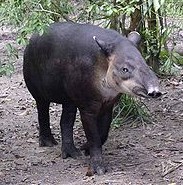
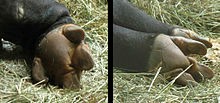



Iguana
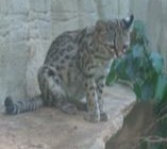

Oncila (Tiger Cat)
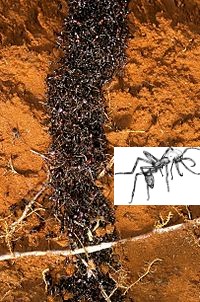

Army Ants


Tarantula


Cicada
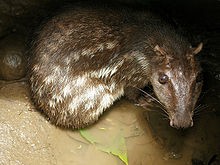

Gibnut (Paca)
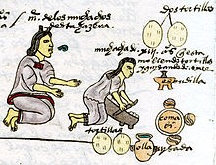

Aztec woman teaching her daughter to make tortillas (Codex Mendoza)
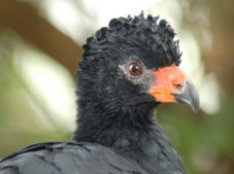

Curassow

CONTENTS







































